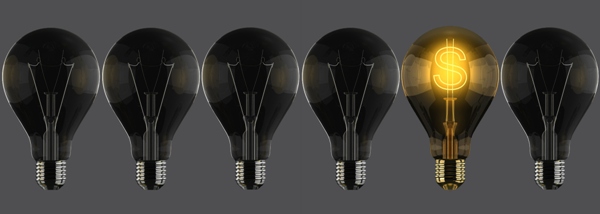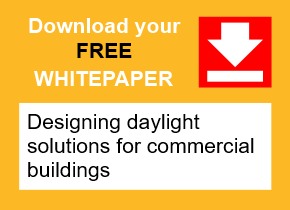Lighting
The term ‘lighting’ refers to equipment, the primary purpose of which, is to produce light. This is typically some form of lamp, but lighting can also refer to the use of natural light to provide illumination.
Light is the electromagnetic radiation that exists within a certain portion of the electromagnetic spectrum. In terms of 'visible light', i.e. that which enables the sense of sight, it is the part of the spectrum that can be detected and seen by the eye.
The level of light on a surface is described as ‘Illuminance’ and is measured in lux (lx), where one lux is equal to one lumen per square metre (lm/m²) and a lumen is the SI unit (International System) of luminous flux, describing the quantity of light emitted by a lamp or received at a surface.
In relation to external lighting, Urban Design Guidelines for Victoria, published by The State of Victoria Department of Environment, Land, Water and Planning in 2017 suggests that: ‘Lighting performs a number of functions, from supporting way-finding, orientation and safe movement at night to providing a decorative effect for building facades, landmarks and paths. Lighting systems can be large- scale and utilitarian, or small and ornamental. They may use overhead lamps, bollards, up-lights, bulkhead or veranda lighting, feature and facade illumination. Shop display lighting can also contribute to overall public realm lighting levels. Lighting is critical to creating a public realm that is safe and inviting for users.’
Articles on Designing Buildings about lighting include:
- Adequate lighting.
- Architectural LED market.
- Aspects of daylighting design covered by EN 17037.
- Ballast or control gear.
- BRE Expert Collection 6 Daylight and shading.
- BREEAM Internal and external lighting.
- BREEAM Reduction of night time light pollution.
- BREEAM Visual comfort Daylighting.
- BREEAM Visual comfort Glare control.
- Colour.
- Colour appearance.
- Colour Rendering Index CRI.
- Commercial lighting.
- CIBSE Case Study Hepworth Gallery Lighting.
- Daylight factor.
- Daylight lighting systems.
- Daylit space.
- Designing daylight solutions for commercial buildings.
- Dichroic reflector.
- Discharge lamp.
- Emergency lighting.
- EN 17037 Daylight in buildings.
- Extra-low voltage lamps.
- General lighting v task lighting.
- Glare.
- Health and wellbeing impacts of natural and artificial lighting.
- Human-centric lighting.
- Illuminance.
- Lamp efficacy.
- Light as a Service LaaS.
- Light fitting.
- Light obstruction notice.
- Light pollution.
- Light spill.
- Light well.
- Lighting and energy efficiency.
- Lighting and health infographic.
- Lighting control.
- Lighting designer.
- Lighting energy numeric indicator LENI.
- Lighting in commercial buildings.
- Lighting of construction sites.
- Lighting for circadian rhythms.
- Luminaire efficacy.
- Luminous flux.
- Metamaterials.
- Natural light.
- People-friendly lighting controls.
- Power factor.
- Rights to light.
- Separate zoning control.
- Smart lighting market to 2020.
- Smart office lighting.
- Space classifications for lighting controls.
- Specialist process lighting.
- Street lighting.
- The essential guide to retail lighting.
- The impact of lighting in retail design.
- Types of lamp.
- Types of lighting.
- Types of building EN 17037 applies to.
- Use of lighting to improve health and wellbeing.
- Visible light.
- Working with lighting maintenance contractors.
Featured articles and news
RTPI leader to become new CIOB Chief Executive Officer
Dr Victoria Hills MRTPI, FICE to take over after Caroline Gumble’s departure.
Social and affordable housing, a long term plan for delivery
The “Delivering a Decade of Renewal for Social and Affordable Housing” strategy sets out future path.
A change to adoptive architecture
Effects of global weather warming on architectural detailing, material choice and human interaction.
The proposed publicly owned and backed subsidiary of Homes England, to facilitate new homes.
How big is the problem and what can we do to mitigate the effects?
Overheating guidance and tools for building designers
A number of cool guides to help with the heat.
The UK's Modern Industrial Strategy: A 10 year plan
Previous consultation criticism, current key elements and general support with some persisting reservations.
Building Safety Regulator reforms
New roles, new staff and a new fast track service pave the way for a single construction regulator.
Architectural Technologist CPDs and Communications
CIAT CPD… and how you can do it!
Cooling centres and cool spaces
Managing extreme heat in cities by directing the public to places for heat stress relief and water sources.
Winter gardens: A brief history and warm variations
Extending the season with glass in different forms and terms.
Restoring Great Yarmouth's Winter Gardens
Transforming one of the least sustainable constructions imaginable.
Construction Skills Mission Board launch sector drive
Newly formed government and industry collaboration set strategy for recruiting an additional 100,000 construction workers a year.
New Architects Code comes into effect in September 2025
ARB Architects Code of Conduct and Practice available with ongoing consultation regarding guidance.
Welsh Skills Body (Medr) launches ambitious plan
The new skills body brings together funding and regulation of tertiary education and research for the devolved nation.
Paul Gandy FCIOB announced as next CIOB President
Former Tilbury Douglas CEO takes helm.
UK Infrastructure: A 10 Year Strategy. In brief with reactions
With the National Infrastructure and Service Transformation Authority (NISTA).
























